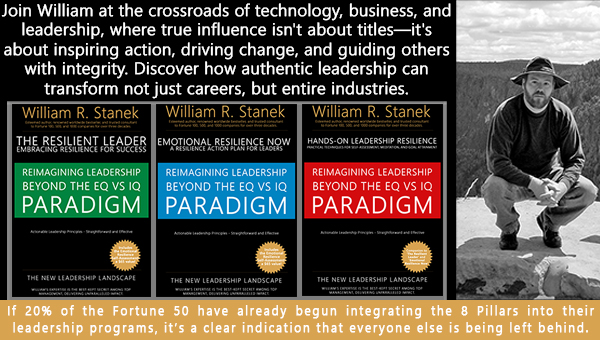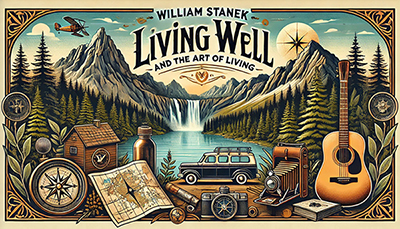
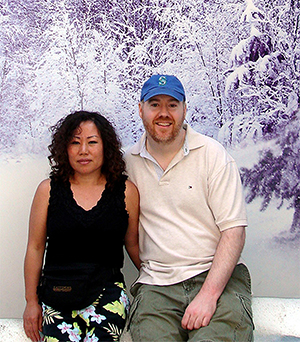 Photography Tips for Everyday Moments
Photography Tips for Everyday Moments
The most extraordinary beauty is often found in ordinary moments. In this series, William Stanek helps you see the world through a new lens, transforming everyday experiences into stunning photographic memories.
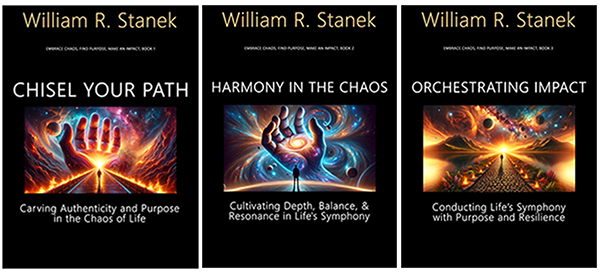
Transform your life with practical wisdom. Discover William Stanek's 'Living Well' series—your guide to a balanced and fulfilling life.
Discover William Stanek's Exclusive Art Collection
Explore and purchase the stunning art featured on this site. Own a piece of William Stanek's unique and captivating artwork today!
(April 26, 2025) Finding Inspiration in Unlikely Places: From Chaos to Composition
Life is often messy and chaotic, filled with seemingly random moments and disordered scenes. But within this chaos lies a wealth of creative potential for photographers willing to look closely. The art of photography isn’t just about capturing what is obviously beautiful; it’s about finding beauty and meaning in places where others might see only disorder. Here, we’ll explore how to find inspiration in the chaos of everyday life, teaching you how to identify hidden patterns, frame order within disorder, and cultivate the patience needed to see beauty in the mundane.
Introduction: The Beauty Within Chaos
Photography, at its core, is about finding order in chaos. It’s about seeing what others might overlook and framing it in a way that tells a story, evokes emotion, or reveals an underlying structure. Throughout my career, I’ve often found my most compelling images in places where others might see only clutter or confusion. Whether it’s a busy street, a crowded market, or the tangled branches of a forest, there is always a way to find harmony within the disorder.
The challenge—and the reward—of photographing chaos is that it forces you to look deeper, to observe more carefully, and to make creative decisions about what to include and what to exclude from your frame. In this article, we’ll delve into techniques that will help you turn chaotic scenes into compelling compositions, finding inspiration in the most unlikely places.
Pattern Recognition: Finding Hidden Patterns in Everyday Environments
One of the most powerful tools for turning chaos into composition is pattern recognition. Patterns are naturally occurring repetitions of shapes, lines, colors, or textures that can bring a sense of order to an otherwise chaotic scene. By training your eye to spot these patterns, you can create images that feel balanced and intentional, even in the midst of disorder.
Identifying Patterns in Chaos: Patterns can be found everywhere, even in the most chaotic environments. Look for repeating elements—such as rows of windows on a building, the rhythm of parked cars on a busy street, or the way light filters through tree branches. These patterns can serve as the foundation of your composition, bringing a sense of structure to your image.
Creating Visual Rhythm: Visual rhythm is created when patterns guide the viewer’s eye through the image. By emphasizing patterns in your composition, you can create a sense of movement or flow, leading the viewer from one part of the image to another. This rhythm can be subtle, like the alternating light and shadow on a textured surface, or more pronounced, like a series of repeating shapes.
Breaking the Pattern: Sometimes, the most interesting compositions come from breaking a pattern. Look for elements that disrupt the repetition—a single red leaf among green ones, a lone figure in a crowded scene, or a crack in an otherwise smooth wall. These breaks in the pattern can draw attention and add tension or interest to your image.
Pro Tip: Practice spotting patterns in everyday life by taking a few minutes each day to observe your surroundings without your camera. Look for repetitions in shapes, colors, and textures, and think about how you would frame them in a photograph.
Exercise: Choose a chaotic environment—such as a bustling street, a busy market, or a natural setting—and spend time identifying patterns within the scene. Photograph these patterns, focusing on how they bring a sense of order to the chaos. Experiment with compositions that both follow and break the patterns, and compare the different effects.
Framing the Chaos: Techniques for Isolating Elements that Create a Sense of Order
When faced with a chaotic scene, one of the most effective ways to create a compelling composition is to isolate specific elements that bring a sense of order. This involves making deliberate choices about what to include in your frame and how to position those elements to create balance and focus.
Selective Framing: Selective framing is about choosing a specific part of a chaotic scene to focus on, effectively cutting out the noise and highlighting what’s important. This might involve zooming in on a single element, changing your angle to simplify the background, or using depth of field to blur out distracting details. The goal is to create a composition that feels intentional and cohesive, even when surrounded by disorder.
Leading Lines: Leading lines are a powerful compositional tool that can help bring order to chaos by guiding the viewer’s eye through the image. Look for natural lines in the scene—such as roads, fences, or shadows—that lead towards your subject. By positioning these lines carefully within your frame, you can create a sense of direction and structure.
Framing Within the Frame: Another technique for isolating elements within a chaotic scene is to use natural frames, such as doorways, windows, or branches. These frames help to focus attention on your subject, creating a composition that feels more organized and contained. Framing within the frame can also add depth and layers to your image, making it more visually engaging.
Pro Tip: When composing your shot, take a moment to step back and assess the scene as a whole. Consider different ways of framing the chaos—whether by isolating a small detail, using leading lines, or finding a natural frame. Experiment with different approaches until you find the one that best communicates your vision.
Exercise: Visit a location that feels chaotic or cluttered—such as a construction site, a dense forest, or a crowded event—and practice framing the chaos. Use selective framing, leading lines, or natural frames to isolate elements that bring a sense of order to the scene. Compare your images and reflect on how different framing techniques influence the overall composition.
Mindful Observation: Developing the Patience to See Beauty in the Mundane
Finding inspiration in chaos requires more than just technical skills—it requires a mindset of mindful observation and patience. By slowing down and taking the time to truly see your surroundings, you can discover beauty and order in places where others might see only disorder.
Practicing Patience: Mindful observation begins with patience. Instead of rushing to capture the first thing that catches your eye, take the time to explore the scene, looking for hidden details and patterns. This might mean spending several minutes—or even longer—observing a scene before you take a single shot. The more patient you are, the more likely you are to find the subtle beauty within the chaos.
Seeing Beyond the Surface: Mindful observation also involves looking beyond the obvious to find the less apparent beauty in a scene. This might mean noticing the way light interacts with objects, the textures that emerge in different lighting conditions, or the small moments that reveal themselves only after prolonged observation. By training your eye to see beyond the surface, you can find inspiration in even the most mundane or chaotic settings.
Embracing the Unexpected: Part of finding beauty in chaos is being open to the unexpected. Sometimes, the most compelling images come from moments of spontaneity—a sudden change in light, an unexpected movement, or a fleeting interaction. By being present and attentive, you can capture these moments as they happen, turning chaos into composition.
Pro Tip: Practice mindful observation by setting aside time each day to observe your surroundings without your camera. Focus on being fully present, noticing the details, patterns, and interactions that occur around you. This practice will help you develop the patience and awareness needed to find beauty in chaotic or mundane scenes.
Exercise: Spend an hour in a chaotic or cluttered environment, focusing solely on observation. Notice the patterns, interactions, and details that might go unnoticed at first glance. After your observation period, take out your camera and try to capture the beauty you’ve found within the chaos. Reflect on how the practice of mindful observation influenced your approach to photography.
Finding Order in the Unexpected: Turning Chaos into Art
Photographing chaos is about more than just taming disorder—it’s about finding art within the unexpected. By recognizing patterns, isolating elements, and practicing mindful observation, you can transform chaotic scenes into compositions that are not only visually appealing but also deeply meaningful.
Embracing Imperfection: Chaos is often associated with imperfection—scenes that are messy, unorganized, or incomplete. But these imperfections can be the very thing that makes a composition interesting. Embrace the imperfect, the asymmetrical, and the unexpected, and see how they can add character and depth to your images.
Creating a Narrative: Every chaotic scene has a story to tell, and your job as a photographer is to find that story and bring it to life. Think about the emotions, interactions, or conflicts that are present in the scene, and use your composition to highlight these elements. Whether it’s the hustle and bustle of a city street or the tangled roots of a tree, there’s always a narrative to be found within the chaos.
Pro Tip: When photographing chaos, approach each scene with a sense of curiosity and openness. Instead of trying to impose order on the scene, let the scene guide your composition. Be willing to experiment, to make mistakes, and to find beauty in the unexpected.
Exercise: Choose a chaotic scene and approach it with the goal of creating art from the unexpected. Focus on embracing imperfections, finding hidden narratives, and letting the scene guide your composition. Experiment with different techniques and approaches until you find the one that best captures the essence of the chaos.
Conclusion: The Art of Finding Inspiration in Chaos
Photography is as much about seeing as it is about shooting. By learning to find inspiration in unlikely places—by recognizing patterns, framing chaos, and practicing mindful observation—you can create images that are not only visually compelling but also rich with meaning.
As you continue your journey as a photographer, remember that chaos is not something to be avoided—it’s something to be embraced. The most interesting compositions often come from the most unexpected places, and the beauty of photography lies in its ability to reveal order within disorder. So the next time you find yourself in a chaotic environment, take a moment to look closer, to observe more carefully, and to find the hidden beauty within the chaos.
Share your photos that capture order within chaos with us on Instagram using #ArtFromChaos. We’d love to see how you’re turning the messy, the mundane, and the unexpected into compelling compositions.
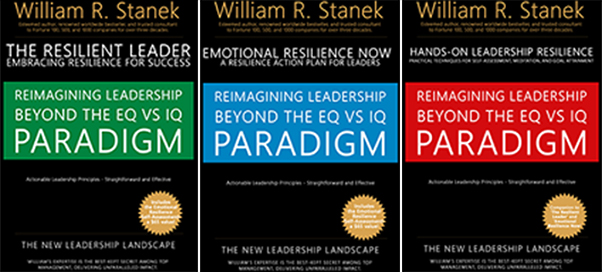
Join William at the crossroads of technology, business, and leadership, where true influence isn't about titles - it's about inspiring action, driving change, and guiding others with integrity. Discover how authentic leadership can transform not just careers, but entire industries.
Bring Inspiration Home
Enhance your space with William Stanek's evocative art. Each piece is crafted to inspire and uplift your everyday life.
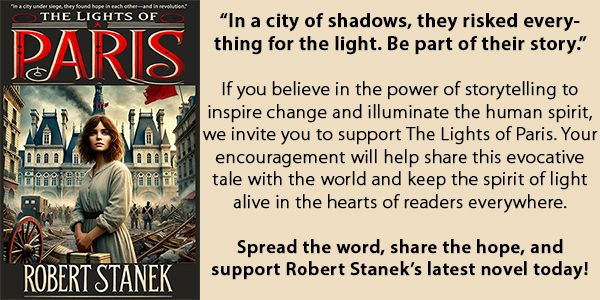
Support The Lights of Paris by Robert Stanek, William Stanek's pen name! Through vivid historical detail and deeply moving character stories, Robert takes readers on an unforgettable journey through one of history’s most transformative times.
